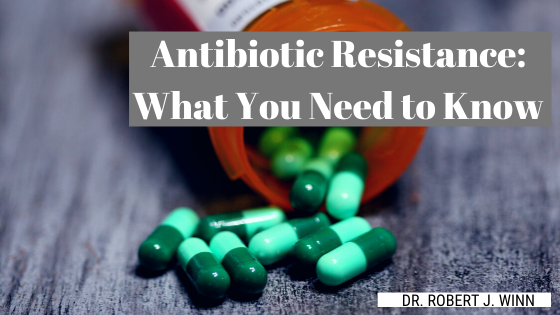Most of us have been prescribed an antibiotic when we’ve been feeling under-the-weather. We take the medications, and shortly thereafter, we start feeling better. For so long, they’ve done such a great job of defeating even life-threatening diseases. The use of antibiotics has become so common that now, certain bacteria have adapted to become resistant to them. The Center for Disease Control and Prevention reports that at least 2.8 million people get an antibiotic-resistant infection, and more than 35,000 people die as a result. This is a dangerous situation we’ve found ourselves in, but what caused it?
Causes
Antibiotics only target bacterial infections; however, they’ve become to go-to treatment for almost any type of infection regardless of its severity. Unfortunately, due to the difficulty and cost associated with determining whether an infection is bacterial or viral, they’ve also been prescribed for viral infections.
Another issue that has contributed to antibiotic resistance is that patients are often inconsistent in their medication compliance. When patients fail to take the entire prescribed course, it can lead to genetic mutations in bacteria. Bacterial DNA naturally mutates as part of its evolution. These mutations allow them to adapt their genetic makeup to survive. In the case of overprescribing antibiotics, it will enable them to adapt to low doses of antibiotics, and eventually, they become entirely resistant.
Other concerns are the use of antibiotics in farming and agriculture. Antibiotics are regularly used to prevent infections in fish and livestock, and this uncontrolled usage allows bacteria to become resistant, as well. Humans then consume those fish and livestock, thus passing on the drug-resistant bacteria.
Hospitals, though supposedly sterile, often struggle to eliminate all the various strains of infection present in the population. Large urban centers where overcrowding is common, as well as insufficient hygiene and poor sanitation practices, often allow infections to spread quickly from person to person.
The discovery and production of new antibiotics have dwindled in recent years, which also contributes to the increase in antibiotic-resistant bacteria.
Preventative Measures
So what can we do to prevent bacteria from becoming antibiotic resistance? The World Health Organization advises the general public to remember the following: only to take antibiotics that have been prescribed for them by a healthcare professional. And always complete the full prescription even if you start to feel better, as discontinuing treatment early can promote drug-resistance.
General awareness of the issue and preventative measures can help to slow or limit the number of “superbugs” that are drug-resistant.


